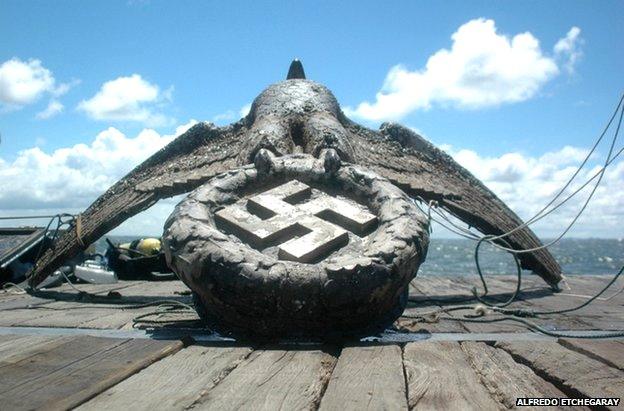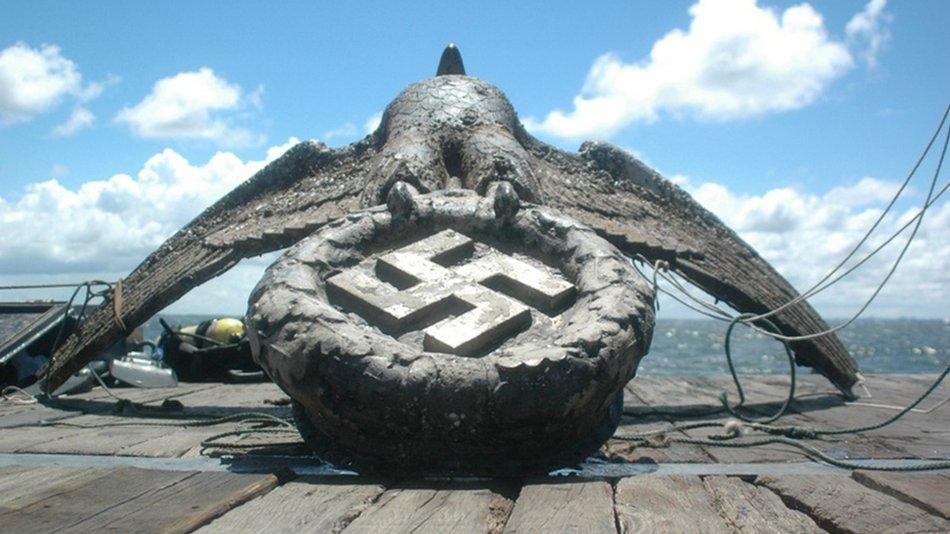Nazi eagle in Uruguay auction 'should go to museum'
- Published

It is feared that the eagle could end up in the hands of Nazi sympathisers
A large bronze eagle with a swastika under its talons soon to be auctioned in Uruguay should go to a museum or educational institute, a US Holocaust research centre is urging.
It should not be allowed to fall into the hands of white supremacists, the Simon Wiesenthal Center warns.
The 350-400kg eagle, salvaged from a German World War Two warship, could be worth about $26m (£21m).
It was recovered by private investors from the waters off Uruguay in 2006.
The object was part of the stern of the Graf Spee, which was scuttled by its crew off the coast of Uruguay's capital, Montevideo, in 1939.
It now sits in a warehouse owned by the Uruguayan government after a long battle over who can claim ownership.
In 2014, the Supreme Court decided that if the eagle were ever to be sold, the profits should be divided between the Uruguayan state and the private salvage company that paid for its recovery.
Last year, a court in Uruguay ruled that the eagle should be auctioned off.
Now, the Simon Wiesenthal Center in Los Angeles is urging Uruguay to instead use the object to serve "as a warning to future generations".
"Both the German authorities and the Wiesenthal Center have taken the position that such artifacts can not serve a growing extreme right market, external and white supremacists," Dr Shimon Samuels, of the Wiesenthal Center, said in a statement.
The museum also referred to "sick trafficking" of the eagle, mentioning an alleged inquiry from an investor who wanted to use it as a centrepiece at the 2020 Fifa World Cup in Qatar, external.
Potential buyers must be warned that Nazi symbols recalling ethnic cleansing cannot be displayed publicly, the Wiesenthal Center suggested.
The centre added that museums or educational institutes that would use the eagle to educate about the Holocaust or other genocides should be given preference in the auction.
It is the latest turn in the history of the controversial object, which was once one of the most ostentatious symbols of Hitler's Third Reich.
When the two-year salvage effort concluded in 2006, the swastika was covered by a cloth, external as the eagle was transported from the ship to a warehouse out of respect for those might be offended.
Uruguay hoped it could become a tourist attraction and it was briefly put on display in Montevideo.
However, the German embassy complained and asked the government to cease exhibiting "Nazi paraphernalia".
- Published15 December 2014
